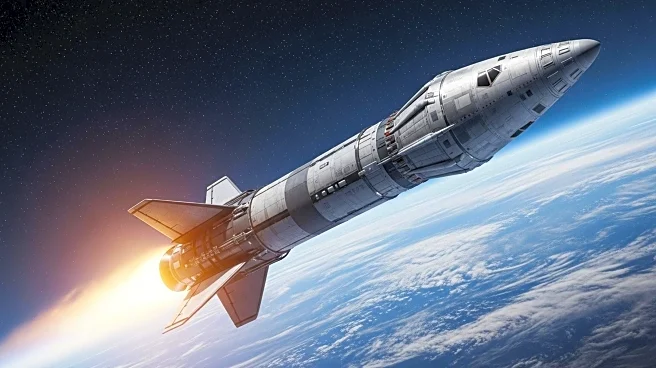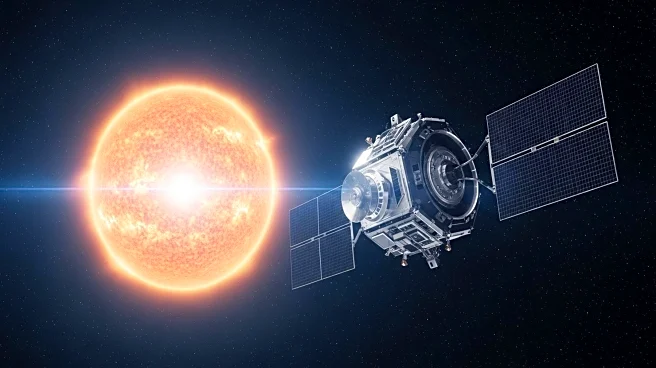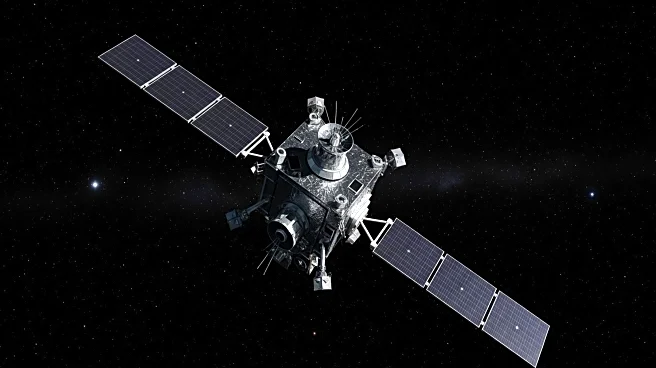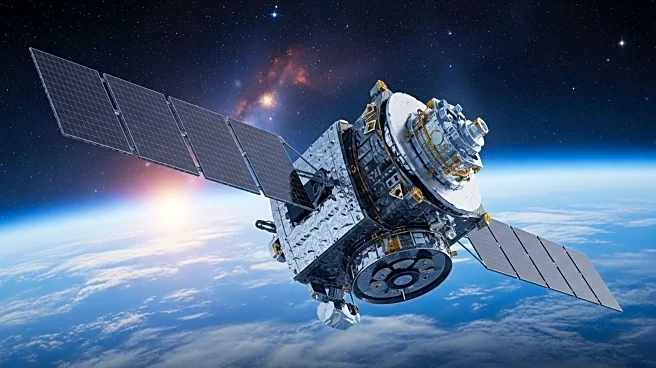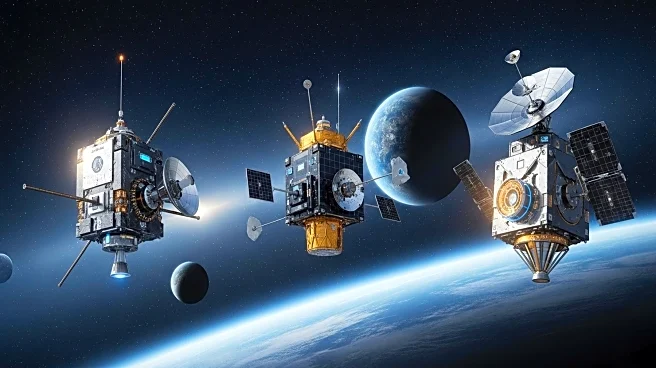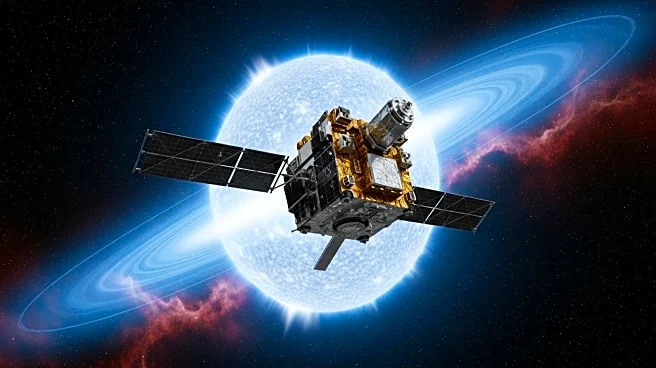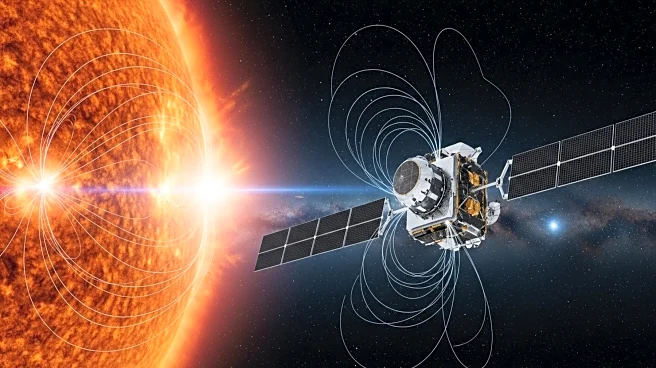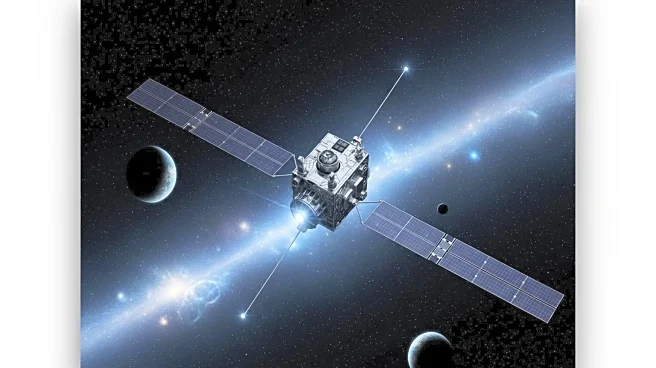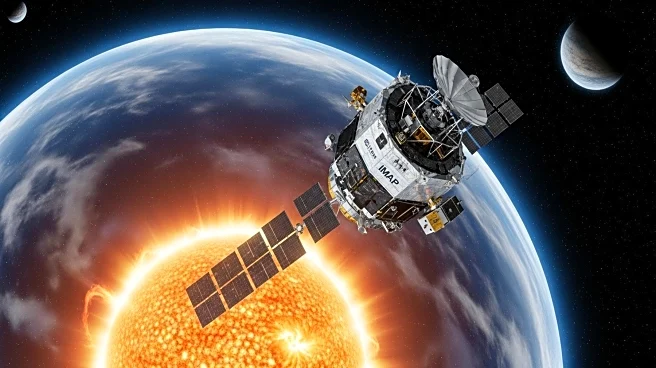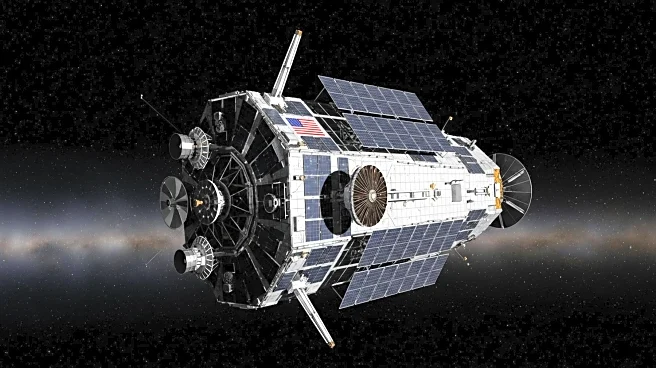What's Happening?
Two scientific instruments developed at Los Alamos National Laboratory have been launched aboard NASA's Interstellar Mapping and Acceleration Probe (IMAP) spacecraft. The mission aims to explore and chart the heliosphere's boundaries, the bubble surrounding the sun and planets, and study its interaction with the galactic neighborhood. IMAP will travel 1 million miles towards the sun, sampling solar wind and observing its interaction with the interstellar medium. The IMAP-Hi instrument, developed at Los Alamos, will map energetic neutral atoms (ENAs) formed by interactions between charged particles from the sun and interstellar gas atoms. This mapping will provide insights into the heliosphere's boundary without direct exploration. The mission will also investigate the energization of charged particles from the sun and their interaction with stellar winds.
Why It's Important?
The IMAP mission is crucial for advancing the understanding of the heliosphere and its protective role against cosmic rays, which can be harmful to life on Earth and astronauts. By mapping the heliosphere's boundaries, scientists can better comprehend how solar and stellar winds form barriers against cosmic radiation. This knowledge is vital for space exploration and protecting satellites and power systems from geomagnetic storms. The mission's findings will contribute to heliophysics, enhancing the understanding of solar system interactions with the galaxy and the origins of space dust and neutral atoms. The instruments aboard IMAP will provide real-time observations of space weather, offering early warnings of potential hazards.
What's Next?
IMAP will continue to collect data on the solar wind and its interaction with the interstellar medium, providing a detailed map of the heliosphere's boundaries. The mission will offer insights into the formation of neutral atoms and space dust, contributing to the understanding of the solar system's origins. Scientists will analyze the data to improve models of space weather and its impact on Earth. The mission's findings will inform future space exploration and the development of protective measures against cosmic radiation.

